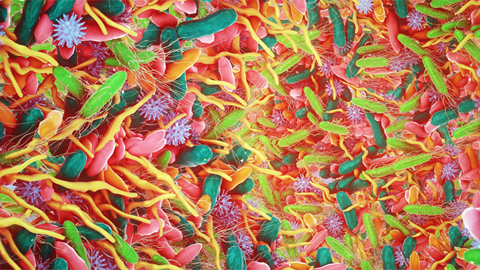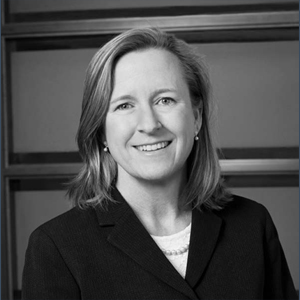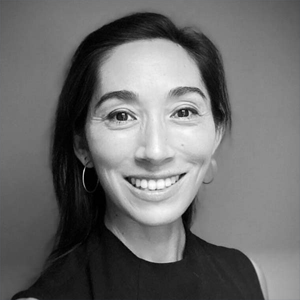As microbiome science forges ahead, will some be left behind?
Over the past decade, research on the human microbiome — the communities of bacteria and other microbes living in and on us — has redefined our understanding of human health. Roughly half the cells in our body are bacteria, with most residing in the gut. This teeming ecosystem helps digest our food, train our immune system, and modulate our brain activity. By uncovering the mechanisms behind these effects, researchers hope to develop targeted microbiome-based interventions to prevent and treat a wide range of ailments, including cancer, malnutrition and Alzheimer’s disease.

That dream came a step closer to reality last fall when the U.S. Food and Drug Administration approved the first microbiome-based therapeutic: Rebyota, a treatment for life-threatening intestinal infections caused by Clostridioides difficile, also known as C. diff. Made from human stool samples, the product supplies bacteria to restore a more balanced gut microbiome and offers an alternative to conventional antibiotics. The FDA approval of a fecal microbiota treatment represents a watershed moment that may herald a new era of microbiome-based medicine.
But there are reasons to worry that the benefits of microbiome science and therapeutics may not accrue equitably around the globe — and that they may be inherently limited by our current approaches to research.
Today, scientists’ understanding of the human microbiome is vastly incomplete, based primarily on samples collected from the U.S. and Europe. A 2022 study analyzing the world’s three largest genomic repositories found that more than 70 percent of human microbiome data come from Northern America and Europe, which are home to just over 14 percent of the world’s population. Meanwhile other regions remain highly underrepresented. For example, only 1.8 percent of samples come from Central and Southern Asia, home to 26 percent of the world’s population. Because the microbiome varies widely across populations with different diets, lifestyles, and genetic backgrounds, this lack of representation limits both our understanding of the microbiome as well as the applicability of future therapeutics for understudied communities.
These disparities in microbiome research mirror patterns seen throughout science. For instance, the first sequencing of the human genome 20 years ago transformed how we think about diagnosing and treating many diseases. However, the field’s disproportionate focus on populations in wealthy countries has limited its potential and threatened to exacerbate global health inequity. Microbiome research now risks repeating the same mistakes.
These patterns, of course, reflect structural issues and inequalities that extend far beyond science. However, science is a critical part of the solution because of its role in advancing public health, research and manufacturing infrastructure, and economies. Scientists thus have a powerful opportunity — and responsibility — to effect improvement.
The need to expand representation in microbiome research is especially urgent because the human microbiome is changing rapidly on a global scale. Industrialization — and the processed foods, high rates of antibiotic use, and built environments that accompany it — profoundly alters the human microbiome. These disruptions have been linked to rising rates of microbiome-associated diseases worldwide, including obesity, as well as autoimmune and neuropsychiatric disorders. Now is the moment to expand microbiome research and study the full diversity of the human microbiome.
So, what can be done?
Scientists can close the representation gap by redefining established research practices and priorities. First, we must broaden microbiome sampling to include more diverse populations, including rural communities. Initiatives such as H3 Africa, Latinbiota, and Microsetta, have made headway in underrepresented regions of the world. Our own organization, OpenBiome, a nonprofit biobank and research hub, is working with scientists around the globe to collect and characterize microbiome diversity in underrepresented populations. Our goal is to establish collaborations with 70 countries by 2030.
Second, we need to foster more equitable collaborations between researchers in the Global North and Global South — and, critically, expand representation in the leadership of the science as well. All too often, nominally collaborative projects involving low- and middle-income countries are led by Global North researchers, overlook local health concerns, and do not advance the careers of Global South scientists. A 2021 review of 168 microbiome studies in Africa found that only around 27 percent focused on diseases of high local health concern, and approximately 20 percent were led by researchers at African institutions.
As international collaborations in microbiome research proliferate, we have an opportunity to change how this science is done. A 2021 perspective by Iruka N. Okeke highlights, through satire, many steps that can be taken to build true partnerships with researchers in low- and middle-income countries. These include consulting with local researchers during study design, developing protocols that can be used in resource-limited settings after Global North collaborators leave, and adjusting research timelines to allow local scientists to develop new skills and contribute significantly to publications. Done correctly, these collaborations will not only advance our understanding of the human microbiome but also grow scientific capacity and infrastructure in low- and middle-income countries. The end result will be a dynamic research ecosystem that’s responsive to the health needs of communities around the globe.
Microbiome scientists are not the first to grapple with questions of inequity and power structure. Solutions will be challenging to develop and implement. However, microbiome science is still young. Changes made now can have an outsized impact on the trajectory of the field and its promise for public health.
To be sure, the FDA approval of the first fecal microbiota treatment was a significant leap for microbiome-based medicine. It will be up to a global community of researchers to determine where we land.
This article was first published on Undark. Read the original.

Enjoy reading ASBMB Today?
Become a member to receive the print edition four times a year and the digital edition monthly.
Learn moreGet the latest from ASBMB Today
Enter your email address, and we’ll send you a weekly email with recent articles, interviews and more.
Latest in Opinions
Opinions highlights or most popular articles

Debugging my code and teaching with ChatGPT
AI tools like ChatGPT have changed the way an assistant professor teaches and does research. But, he asserts that real growth still comes from struggle, and educators must help students use AI wisely — as scaffolds, not shortcuts.

AI in the lab: The power of smarter questions
An assistant professor discusses AI's evolution from a buzzword to a trusted research partner. It helps streamline reviews, troubleshoot code, save time and spark ideas, but its success relies on combining AI with expertise and critical thinking.

How AlphaFold transformed my classroom into a research lab
A high school science teacher reflects on how AI-integrated technologies help her students ponder realistic research questions with hands-on learning.

Writing with AI turns chaos into clarity
Associate professor shares how generative AI, used as a creative whiteboard, helps scientists refine ideas, structure complexity and sharpen clarity — transforming the messy process of discovery into compelling science writing.

Teaching AI to listen
A computational medicine graduate student reflects on building natural language processing tools that extract meaning from messy clinical notes — transforming how we identify genetic risk while redefining what it means to listen in science.

What’s in a diagnosis?
When Jessica Foglio’s son Ben was first diagnosed with cerebral palsy, the label didn’t feel right. Whole exome sequencing revealed a rare disorder called Salla disease. Now Jessica is building community and driving research for answers.



